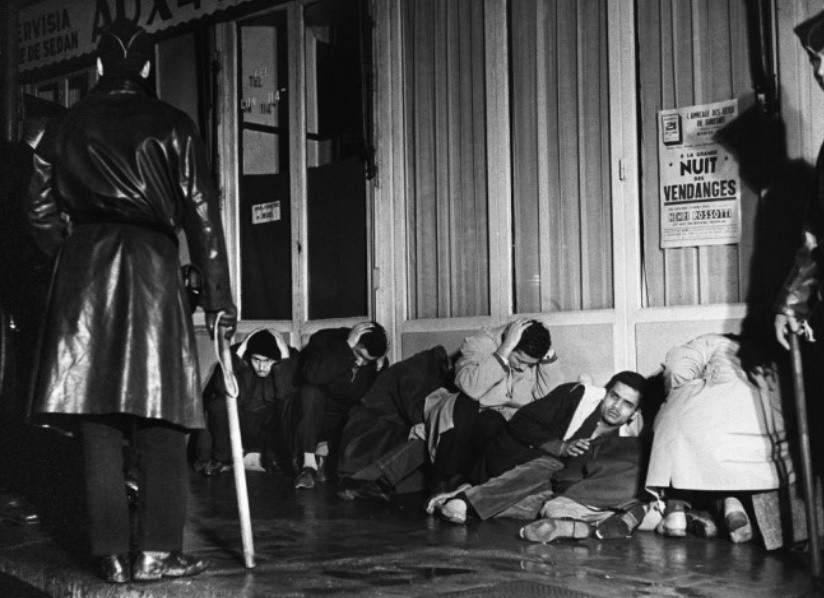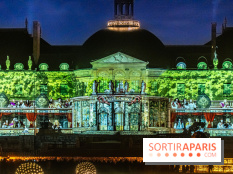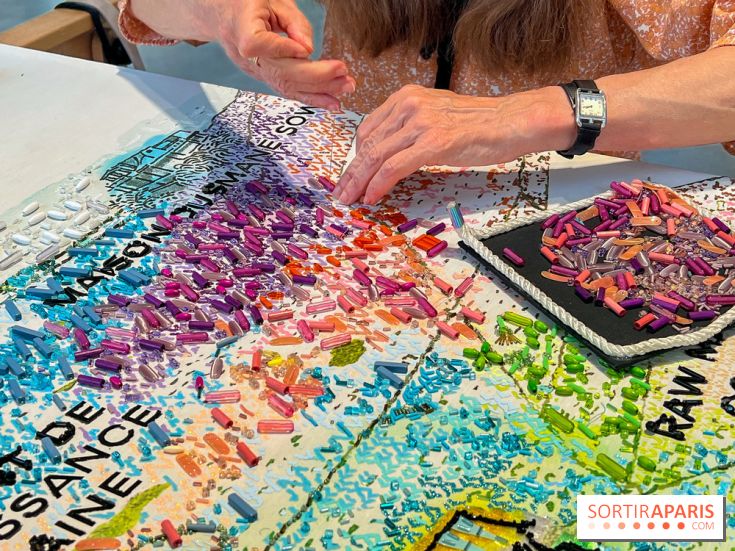On Tuesday, October 17, 1961, a peaceful night-time demonstration in Paris organized by the Front de Libération Nationale (National Liberation Front) in support of Algerian independence was harshly repressed by the police of the day, on the orders of Paris Police Prefect Maurice Papon. Between 30 and 250 Algerian immigrants, according to historians, were killed and thrown into the Seine,
October 1961. Five months after the Evian Accords in April, negotiations between the Front de Libération Nationale and the French government onindependence for Algeria, a French colony since 1830, were well underway, and appeared on the verge of a ceasefire and the establishment of an independent Algerian state.
But in Paris, the climate was poisonous, and clashes between police and immigrants were an almost daily occurrence. Appointed Prefect of Police of Paris in March 1958, Maurice Papon, formerly Prefect of Constantine where he had created the operational protection detachments whose specialty was torture, wished to fight the French federation of the Front de Libération Nationale even more boldly and violently, and imported to Paris the tortures already used in Algeria.
Raids and arrests within the Algerian community in Paris intensified in August 1961. In response, the FLN organized a series of attacks that cost the lives of eleven French policemen. The scale of the violence increased on both sides, and Maurice Papon announced that "for every blow received", police officers were ordered to "give ten in return".
On October 5, 1961, a new affront came with the introduction of a curfew in Paris for "French Muslims from Algeria", who were ordered not to leave their homes between 8.30pm and 5.30am every night. The order reads as follows: "Algerian workers are urgently advised to refrain from circulating at night in the streets of Paris and its suburbs, particularly between 8:30 p.m. and 5:30 a.m.".
But the Front de Libération Nationale (National Liberation Front) would have none of it. Rightly considering the ban to be racist, discriminatory and arbitrary, the FLN called on Algerian immigrant men, women and children to demonstrate peacefully on the evening of October 17, 1961, against the curfew imposed 10 days earlier and to demand their country's independence.
More than 20,000 Algerians responded to the FLN's call to demonstrate and defied the curfew. The silent, peaceful demonstration - the FLN had ordered demonstrators not to respond to any provocation - began at eight o'clock in the evening. Gathered in public squares, the demonstrators chanted their slogans: "No to the curfew!"; "Negotiate with the interim government of the Algerian Republic"; "Independence for Algeria!"; "Long live the Liberation Front."
But the orders from the Ministry of the Interior were clear: such gatherings were to be prevented at all costs. And so began a night of horror, the culmination of the Algerian revolution in France; a veritable massacre committed by the French authorities against Algerian demonstrators.
In one night, 11,538 of the 22,000 demonstrators were arbitrarily arrested and transferred on Parisian buses requisitioned for the occasion to various internment camps in Paris, including the Palais des Sports, the Porte de Versailles exhibition center, the Pierre de Coubertin stadium and the Vincennes identification center, where they were beaten, tortured and interrogated for several days by the forces of law and order. Some lost their lives.
As they left the metro stations, the immigrants were beaten and insulted with the utmost violence; the "face hunt" was launched, and the " ratonnade" lasted all night. In the streets and metro stations, the police deliberately attacked and killed dozens of demonstrators, dumping their bodies in the Seine.
In the early hours of October 18, 1961, the newspapers reported only 2 to 3 deaths according to the police, and between 44 and 64 injured. It was later revealed that many of the journalists and photographers present at the scene on the evening of the demonstration had been muzzled by the Prefecture de Police; only Libération and L'Humanité dared to denounce the massacre. But in the days that followed, dozens of bodies were found floating in the Seine. According to historians, between 30 and 250 Algerians died that night.
Despite the indignation of many members of parliament, including Gaston Defferre and Eugène Claudius-Petit, who quickly called for a commission of inquiry, Maurice Papon reiterated his support for the French police, declaring that they had done their duty.
For a long time, France remained silent about this event of rare violence, considered by British historians Jim House and Neil MacMaster to be the most violent contemporary state repression of a street demonstration in Western Europe.
It wasn't until 2001 that a commemorative plaque reading "In memory of the many Algerians killed during the bloody repression of the peaceful demonstration of October 17, 1961" was affixed by the mayor at the time, Bertrand Delanoë, on the Pont Saint-Michel, a stone's throw from the Préfecture de Police from where so many Algerians were thrown into the Seine.
In 2012, French President François Hollande acknowledged France's involvement in the massacre for the first time, stating half-heartedly: "On October 17, 1961, Algerians demonstrating for the right to independence were killed in a bloody crackdown. The Republic acknowledges these facts with lucidity. Fifty-one years after this tragedy, I pay tribute to the memory of the victims."
To find out more, click here:
October 17, 1961: The Algerian war in the heart of Paris
October 17, 1961 in Paris: an Algerian demonstration, a colonial massacre
Location
Pierre de Coubertin Stadium
82 avenue Georges Lafont
75116 Paris 16
More information
Iconography: Header: Jean Texier/Mémoires d'Humanité - Archives départementales de la Seine-Saint-Denis Photo no. 2: Algerian workers' demonstration. Paris, October 17, 1961 © Roger-Viollet Photo n°3: October 17, 1961. Métro Concorde © Elie Kagan/Bibliothèque de documentation internationale contemporaine Photo no. 4: Algerian demonstrators apprehended in Puteaux, October 17, 1961 - ©AFP Photo no. 5: Front page of Le Figaro, October 18, 1961 Photo no. 6: Plaque in memory of the Algerians killed, FSouici







































